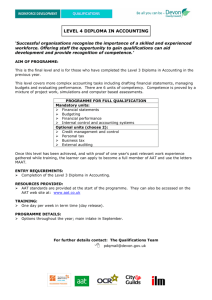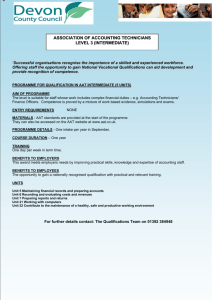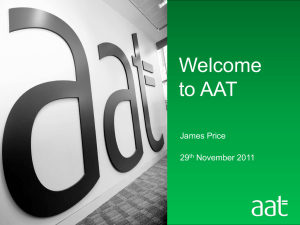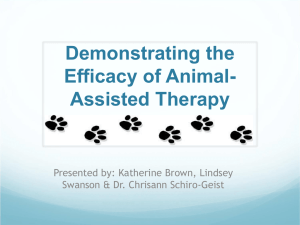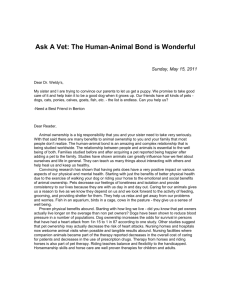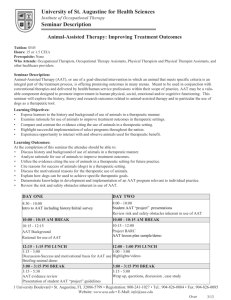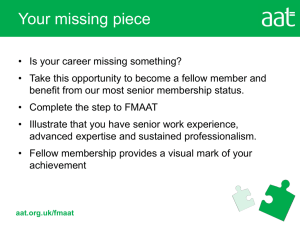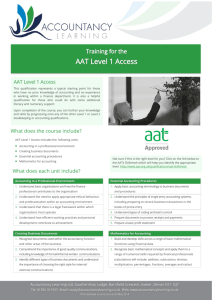animal-assisted therapy and the human
advertisement
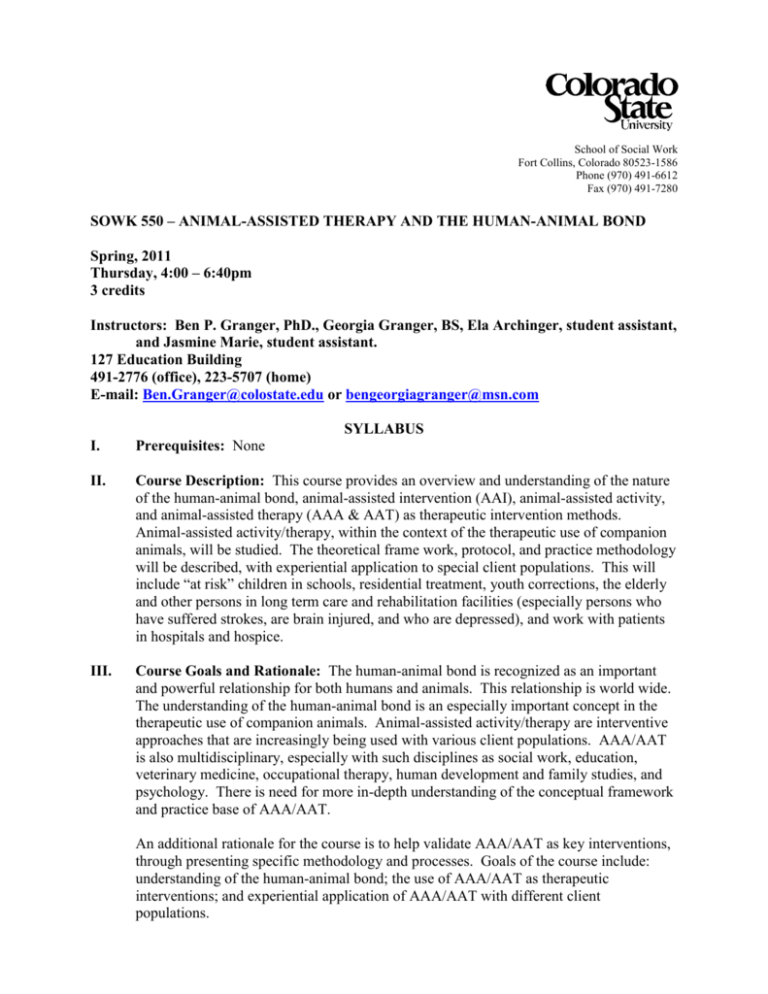
School of Social Work Fort Collins, Colorado 80523-1586 Phone (970) 491-6612 Fax (970) 491-7280 SOWK 550 – ANIMAL-ASSISTED THERAPY AND THE HUMAN-ANIMAL BOND Spring, 2011 Thursday, 4:00 – 6:40pm 3 credits Instructors: Ben P. Granger, PhD., Georgia Granger, BS, Ela Archinger, student assistant, and Jasmine Marie, student assistant. 127 Education Building 491-2776 (office), 223-5707 (home) E-mail: Ben.Granger@colostate.edu or bengeorgiagranger@msn.com SYLLABUS I. Prerequisites: None II. Course Description: This course provides an overview and understanding of the nature of the human-animal bond, animal-assisted intervention (AAI), animal-assisted activity, and animal-assisted therapy (AAA & AAT) as therapeutic intervention methods. Animal-assisted activity/therapy, within the context of the therapeutic use of companion animals, will be studied. The theoretical frame work, protocol, and practice methodology will be described, with experiential application to special client populations. This will include “at risk” children in schools, residential treatment, youth corrections, the elderly and other persons in long term care and rehabilitation facilities (especially persons who have suffered strokes, are brain injured, and who are depressed), and work with patients in hospitals and hospice. III. Course Goals and Rationale: The human-animal bond is recognized as an important and powerful relationship for both humans and animals. This relationship is world wide. The understanding of the human-animal bond is an especially important concept in the therapeutic use of companion animals. Animal-assisted activity/therapy are interventive approaches that are increasingly being used with various client populations. AAA/AAT is also multidisciplinary, especially with such disciplines as social work, education, veterinary medicine, occupational therapy, human development and family studies, and psychology. There is need for more in-depth understanding of the conceptual framework and practice base of AAA/AAT. An additional rationale for the course is to help validate AAA/AAT as key interventions, through presenting specific methodology and processes. Goals of the course include: understanding of the human-animal bond; the use of AAA/AAT as therapeutic interventions; and experiential application of AAA/AAT with different client populations. IV. Course Outcome Objectives: By the end of the course students will: A. Develop an integrative theoretical perspective on the human-animal bond, and the therapeutic use of companion animals. B. Develop an understanding of animal-assisted activity/therapy, especially with children and with the elderly. C. Become familiar with the protocol and therapeutic use of an animal species (i.e., dog, cat) including medical and behavioral screening of the animal, training of the human partner, and practice skills of the intervention. D. Have experiential opportunities in providing AAA/AAT. E. Discuss and evaluate the impact of AAA/AAT. The course will focus on dogs as the companion animal in AAA/AAT, and HABIC’S (HumanAnimal Bond in Colorado) human-animal intervention team approach. The human-animal intervention team will be presented in some depth as one approach in AAA/AAT. V. Course Methodology and Expectations: Students are expected to actively prepare and participate in class discussions relating to course materials and assignments. The general class format will include: A. Presentations by the instructors and guests relating to assigned materials and topics; B. Use of slides and videos, as well as AAA/AAT simulations using human-animal teams; C. Experiential components, including demonstrations, observations of AAA/AAT sessions, visits to selected programs, and role playing; D. Discussion of presented materials and topics. VI. Evaluation and Grading: … Experiential component – 30% Paper/Long-term project – 25% Final Exam – 20% Critiques of reading assignments – 10% Class participation – 15% Total: 100% or points. Grade 100 – 90 = A: 89 -79 = B, etc. VII. Learning Resources: There is not a required text for this course. Several books are noted in the selected bibliography. Some materials will be provided during the class sessions. Students are required to read and provide a critique of five journal articles or chapters from books. These should be turned in every two weeks. Refer to requirements for this assignment. This seminar will use an optional textbook, together with other readings in the field. Other readings, required or recommended, will be provided during the seminar. Directed readings are provided in the bibliography. Academic Honesty Policy: Specific procedures for cases of academic dishonesty are described by the Academic Integrity Policy in the General Catalogue and the Graduate School Bulletin. Policies Regarding Students with Special Needs: Please discuss any special needs that may affect your learning or ability to complete the course assignments with your instructor during the first week of class. As required by Section 504 of the Rehabilitation Act, appropriate accommodations will be made for students with documented disabilities. Contact the Resources for Disables Students Office for more information (970-491-6385) or http://rds.colostate.edu/index.asp. VIII. Course Schedule: Session 1 – Course overview Understanding terminology, including human-animal bond, animal-assisted intervention, animalassisted therapy, animal-assisted activity. Overview of HABIC (Human-Animal Bond in Colorado). Assignment: Observation of human-animal bond (due session 3). Session 2 – Programs and partners in AAA/AAT Consideration of service providers, service recipients and appropriate animal partners. Humananimal teams. Session 3 – Development and evaluation of AAA/AAT programs Protocol, procedures, planning, supervising; research/evaluation Due: Presentation and discussion of human-animal bond observations. Session 4 – AAT in depth: schools, children “at risk,” autism Assignments: Observation of AAA/AAT sessions (scheduled during semester). Term paper/long-term project discussion/selection. Session 5 – Dogs as partners in AAA/AAT Selection and training of dogs for AAA/AAT; stress in dogs; canine body language; service dogs vs. therapy dogs Due: Discussion of human-animal bond observations (continued). Sign up for AAA/AAT session observations. Session 6 – Other animals in AAA/AAT and AAI Horses, farm animals. Equine-assisted therapies. Session 7 – AAT in depth: hospice, grief and loss. Argus Institute. Session 8 – AAT in depth: Youth corrections. Field visit to Platte Valley Youth Services Center. (Spring Break) Session 9 – AAT in depth: long-term care, rehabilitation. Session 10 – Experiential assignment planning - AAT Session 11 – Experiential assignment presentations Session 12 – Term paper presentations Session 13 – Term paper presentations; long-term project summaries Session 14 – Long-term project summaries Review for final Session 15 – Final exam, course evaluation IX. Assignments Human-Animal Bond Observations Select a setting or location where you can observe a human-animal bond experience. Be prepared to share this with other students during the third class session. This is considered under class participation. Critique of Textbook Chapters or Professional Articles You are to read and respond to five professional journal articles or book chapters. For professional articles, please select preferably juried journals such as Anthorzoos any issues, Journal of the American Medical Association (articles relating to AAA/AAT), Journal of the American Veterinary Medical Association (articles relating to AAA/AAT), or journals from other professional disciplines (gerontology, aging, child welfare, nursing, occupational therapy, corrections). Select chapters and/or articles based on your personal interest or field of study. Read, briefly summarize and critique each article. Each critique should be a one-page, typed, single-spaced document. In addition to your name and the date, the heading of the page should include the reference citation for the chapter or article being reviewed. The paper should include only a brief (one-paragraph) summary of the chapter or article. The remainder of the page should reflect what you got out of the chapter. It may include positive and/or negative responses to the text, notations regarding application of this information, comparisons to other information studied, and/or suggestions for improvement. The critiques should be turned in at one of the class sessions. As noted, they should be submitted every two weeks. Each critique will be graded as pass/fail (all or no points) based on completeness (citation of material, succinct and accurate summary, and critique) and timely submission. Experiential Component The experiential or practice components of the course are provided to give students some “hands-on” experience in AAA/AAT. You will have opportunity to observe HABIC’s humananimal teams in different settings. Students will also plan and carry out in AAT sessions. This will be evaluated under the experiential part of the course. Term Paper/Long-term Project Each student should elect to complete either a term paper or a long-term project for this class. This assignment, which is worth 25% of the course grade, is designed to give the course participant the opportunity to investigate an area of Animal-Assisted Interventions of her/his choosing. Options have been provided to accommodate individuals of different learning styles. Students are required to pick unique topics and avoid duplication of subjects chosen by their peers. Projects and research topics should be discussed with the course instructors by the fourth class session. Long-term Project, designed to give the course participant the opportunity to interact with local practitioners in the field as well as increased time for direct observation and hands-on experience: Select a field of AAA/AAT for which you have special interest or passion. You might be interested in learning about programs that involve a specific type of animal, a program serving a specific population, or a certain role within a program. Determine a learning goal for yourself that relates to your field of interest that might be accomplished by involvement with a local AAA/AAT organization. Report your goal to course instructors and discuss possible programs in the area where you might gain the experience to meet your goal. This needs to be done early in the semester in order to allow time to make arrangements and actually gain the required hours of involvement. Document at least 15 hours of work at the AAA/AAT facility addressing your goals. Summarize your goals and progress toward meeting them in a two-page (typed, doublespaced) paper. Prepare a 10-minute presentation for the class, discussing your experience. (In order to allow all students adequate time to thoroughly cover their topics, you will be asked to adhere closely to the 10-minute guideline.) Sign up to present either on Session 13 or Session 14 of this class. Your summary paper will be due at the time of your presentation. Term paper, intended to give the course participant the opportunity to become familiar with the literature available in the field; practice skills of selecting, reading, and evaluating such literature; and gain experience in presenting such information in a professional manner: Select a topic in the field of AAA/AAT for which you have special interest or passion. Your topic might be based on involvement of a specific species, work with a certain population, application in a unique setting, or exploration of a theory about the human-animal bond. Report your topic to course instructors as soon as you have determined it. Have other choices in mind, as we want a variety of information shared and will allow only one presentation on any specific topic. Research the topic with an open but critical mind: allow yourself to be open to new ideas (don’t simply look for materials which support a stance you have already taken) but always be wary of reports that are not based on sound research or reputable sources. Write a term paper citing and discussing the research found on your topic. The paper should be typed, double-spaced and approximately 15 pages in length. Cite at least four reputable sources in your work. Include references presented using APA or another acceptable format. This paper will be evaluated on the quality of the content, organization and clarity, references, and overall quality. Prepare a 10-minute presentation for the SOWK 550 class, which summarizes your research and includes your current position on the topic. You will be evaluated on the quality of your presentation and the clarity of the position you state on the subject. (In order to allow all students adequate time to thoroughly cover their topics, you will be asked to adhere closely to the 10-minute guideline.) Sign up to present either on Session 12 or Session 13 of this class. The paper will be due at the time of your presentation. IX. Selected Bibliography Ascione, F.R. (2005). Children and animals: exploring the roots of kindness and cruelty. West Laffayette, IN: Purdue University Press. Arkow, P. (1982). How to Start a Pet Therapy Program. Alameda: The Latham Foundation. Banks, M.R. & Banks W.A. (2002). The effects of animal-assisted therapy on loneliness in an elderly population in long-term care facilities. Journal of Gerontology: Medical Sciences, 57A(7), 428-432. Barba, B.E. (1995). The positive influence of animals: animal-assisted therapy in acute care [see comments]. Clinical Nurse Specialist, 9 (4), 199-202. Beck, A.M., & Katcher, A.H. (1984). A new look at pet-facilitated therapy. Journal of the American Veterinary Medical Association, 184 (4), 414-21. Bernard, S. (1995). Animal assisted therapy: a guide for health care professionals and volunteers. Whitehouse, Texas (P.O. Box 1696, Whitehouse, TX 75791): Therapet. Biery, M.J. (1985). Riding and the handicapped. Veterinary Clinics of North America Small Animal Practice, 15 (2), 345-54. Burch, M.R. (1996). Volunteering with your pet: how to get involved in animal-assisted therapy with any kind of pet. New York: Howell Book House. Bustad, L.K. (1996). Reflections on the human-animal bond. Journal of the American Veterinary Medical Association, 208 (2), 203-5. *Chandler, C.K. (2005). Animal-assisted therapy in counseling. Routledge, Taylord & Francis Group. N.M. Cole, K.M., & Gawlinski, A. (1995). Animal-assisted therapy in the intensive care unit. A staff nurse’s dream comes true. Nursing Clinics of North America, 30 (3), 529-37. Cushing J.L., & Williams, J.D. (1995). The Wild Mustang Program: A Case Study in Facilitated Inmate Therapy. Journal of Offender Rehabilitation, 22 (3-4), 95-115. Delta Society (1996). Standards of Practice for Animal-Assisted Activities and Animal Assisted Therapy. Delta Society, Renton, WA Diesch, S.L. (1984). Companion animals on the farm. In P. Arkow (Ed.), Dynamic Relationships in Practice: Animals in the Helping Professions (pp. 257-270). Alameda, CA: Latham Foundation. Engel, B.T. (1992). Therapeutic Riding Programs Instruction and Rehabilitation. A Handbook for Instructors and Therapists. Durango, CO, Barbara Engel Therapy Services. Esteres, S.W. & Stakes, T. (2008). Social effects of a dog’s presence on children with disabilities, Anthrozoos, 21 (1), 5-15. Fick, K.M. (1993). The influence of an animal on social interactions of nursing home residents in a group setting. American Journal of Occupational Therapy, 47 (6), 529-534. *Fine, Aubrey H. (Ed.) (2000, 2006, 2010). Handbook on Animal Assisted Therapy: Theoretical Foundations and Guidelines for Practice. Academic Press. Fox, V.M., Lawlor, V.A., & Luttges, M.W. (1984). Pilot study of novel test instrumentation to evaluate therapeutic horseback riding. Adapted Physical Activity Quarterly, 1 (1), 30-36. Francis, G., Turner, J.T., & Johnson, S.B. (1985). Domestic animal visitation as therapy with adult home residents. International Journal of Nursing Studies, 22 (3), 201-6. Gammonley, J., Howie, A., Kirwin, S., Zapf, S., Frye, J., Freeman, G., & Stuart-Russell, R. (1996) Animal-Assisted Therapy Therapeutic Interventions. Delta Society, Renton, WA. Gonski, Y.A. (1985). The therapeutic utilization of canines in a child welfare setting. Child & Adolescent Social Work Journal, 2 (2), 93-105. Grandin, Temple, & Johnson, C., (2009). Animals make us human: creating the best life for animals. Granger, B.P., Kogan, L. (2000, 2006). “Characteristics of animal-assisted therapy/activity in specialized settings.” Handbook on animal-assisted therapy: theoretical foundations and guidelines for practice. Academic Press. Granger, B., Kogan, L., Fitchett, J., & Helmer, K. (1998). The human-animal team approach to animal assisted therapy. Anthrozoos, 11 (3). Haladay, J. (1989). Animal assisted therapy for PWA’s: bringing a sense of connection. AIDS Patient Care, 3 (1), 38-9. Hansen, K.M., Messinger, C.J., Baun, M.M., and Megel, M. (1999). Companion animals alleviating distress in children. Anthrozoos, 12, 142-148. Harris, M.D., Rinehart, J.M., & Gerstman, J. (1993). Animal-assisted therapy for the homebound elderly. Holistic Nursing Practice, 8 (1), 27-37. Haughie, E., Milne, D., & Elliott, V. (1992). An evaluation of companion pets with elderly psychiatric patients. Behavioral Psychotherapy, 20 (4), 367-372. Holcomb, R., & Meacham, M. (1989). Effectiveness of an animal-assisted therapy program in an inpatient psychiatric unit. Anthrozoos, 2 (4), 259-264. Holcomb, R., Jenfro, C., Weber, B., & Nahan, U. (1997). Use of an aviary to relieve depression in elderly males, 10 (1), 32-36. Horowitz, J. (2010). Animal-assisted therapy for inpatients. Alternative and complimentary therapies., 16:6, 339-343. Hundley, J. (1991). Pet project. The use of pet facilitated therapy among the chronically mentally ill. Journal of Psychosocial Nursing & Mental Health Services, 29 (6), 23-6. Kay, B.R. (1990). Bittersweet Farms. Special Issue: Residential services. Journal of Autism & Developmental Disorders, 20 (3), 309-321. Kogan, L., Granger, B.P., Fitchett, J., et.al. (1998). The human-animal team approach for children with emotional disorders: Two case studies. Child & Youth Case Forum. 28(2), 105121. Kongable, L.G., Buckwalter, K.C., & Stolley, J.M. (1989). The effects of pet therapy on the social behavior of institutionalized Alzheimer’s clients. Archives of Psychiatric Nursing, 3 (4), 191-198. Lapp, C.A. (1991). Nursing students and the elderly: enhancing intergenerational communication through human-animal interaction. Holistic Nursing Practice, 5 (2), 72-9. Law, S., & Scott, S. (1995). Tips for practitioners: Pet care: A vehicle for learning. Focus on Autistic Behavior, 10 (2), 17-18. Lee, D. (1984). Companion animals in institutions. In P. Arkow (Ed.), Dynamic Relationships in Practice: Animals in the Helping Professions (pp. 229-36). Alameda, CA: Latham Foundation. Mallon, G.P. (1994). Cow as co-therapist: Utilization of farm animals as therapeutic aides with children in residential treatment. Child & Adolescent Social Work Journal, 11 (6), 455-474. McConnell, E. (2002). Myths and facts about animal assisted-therapy, nursing, 32, 36. McCowan, L.L. (1984). Equestrian therapy. In P. Arkow (Ed.), Dynamic Relationships in Practice: Animals in the Helping Professions (pp. 237-256). Alameda: Latham Foundation. McQuillen, D. (1985). Pet therapy: Initiating a program. Canadian Journal of Occupational Therapy, 52 (2), 73-76. Muschel, I.J. (1984). Pet therapy with terminal cancer patients. Social Casework, 65 (8), 451-458. Mugford, R. & M’Cormisky, J. (1975). Some recent work on the psychotherapeutic value of cage birds with old people. In Pet Animals and Society: A BSAVA Symposium, 54-65. Nathanson, D.E. (1989). Using Atlantic bottlenose dolphins to increase cognition of mentally retarded children. In Clinical and Abnormal Psychology, 233-242, ed. P. Lovibond & P. Wilson. North Holland, Elsevier. Nathanson, D.E. & de Faria (1993). Cognitive improvement of children in water with and without dolphins. Anthrozoos, 6 (1), 17-29. Nathanson, D.E., de Castro, D., Friend, H., & McMahon, M. (1987). Effectiveness of short term dolphin-assisted therapy for children with severe disabilities. Anthrozoos, 10 (2/3), 1997. Nathanson, D.E. (1998). Long-term effectiveness of dolphin-assisted therapy for children with severe disabilities. Anthrozoos, 11 (1), 1998. Nimer, J. & Lundahl, B. (2007). Animal-assisted therapy: A meta-analysis. Anthrozoos, 20 (3), 225-238. *Pichot, T., & Coulter, M. (2007). Animal-assisted brief therapy: A solution focused approach. The Haworth Press. Ross, S.B. (1992). Building empathy to reduce violence to all living things. Journal of Society for Companion Animal Studies, 4 (1), 4-5. Rossbach, K.A., & Wilson, J.P. (1992). Does a dog’s presence make a person appear more likable? Two studies. Anthrozoos, 5 (1), 40-51. Rowell, M.C. (1990). Creature comfort: Animals as therapists. California Pharmacist, 37 (10), 37-40. Sayler, P. (1992). Selecting the hippotherapy horse. In B.T. Engel (Ed.), Therapeutic Riding Programs Instruction and Rehabilitation. A Handbook for Instructors and Therapists. (8687). Durango, CO, Barbara Engel Therapy Services. Strimph, E.D. (2003). A history of prison inmate-animal interaction programs. American Behavioral Scientist, 47 (1), 70-78. Strand, Elizabeth B. (2004). Interparental conflict and youth maladjustment: the buffering effects of pets. In stress, trauma and crisis (2004). Taylor & Francis Inc. (Brunner-Routledge). Strand, Elizabeth B. (2005). Battered women’s concern for their pets: a closer look. Journal of family social work, vol. 9(4), pp. 39-57. Struckus, J.E. (1991). Pet-facilitated therapy and the elderly client. In P.A. Wisocki (Ed.), Handbook of clinical behavior therapy with the elderly client. Applied clinical psychology (Vol. xviii, pp. 403-419). New York, NY, US: Plenum Press. Voelker, R. (1995). Puppy love can be therapeutic, too. Journal of the American Medical Association, 274 (24), 1897-1899. Note: Additional references will be provided during class discussion, and presentation of research and evaluation projects.
